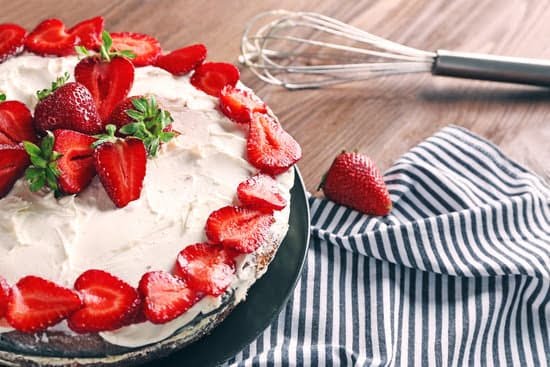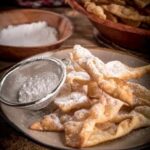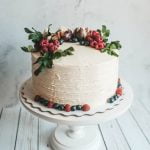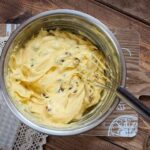Welcome to the world of chocolate moulding for cake decorating. Chocolate is not only a delicious treat, but it also serves as a versatile and stunning medium for creating eye-catching cake decorations. In this blog post, we will provide you with a step-by-step guide on how to mould chocolate in order to achieve professional-looking cake designs.
When it comes to moulding chocolate, it’s important to understand the different types of chocolate that are suitable for this purpose. From dark to milk to white chocolate, each type offers its unique flavors and characteristics. Additionally, we will explore the differences between compound chocolate and couverture chocolate, ensuring you make an informed choice before starting your chocolate moulding journey.
Before you begin moulding your chocolates, it is essential to gather all the necessary tools and materials. From moulds of various shapes and sizes to spatulas and piping bags, having these items ready will make the process smoother. We will provide you with a comprehensive list of essential tools and materials needed for successful chocolate moulding. Plus, we’ll suggest where you can purchase them or offer alternatives if you prefer a do-it-yourself approach.
Get ready to unleash your creative potential with moulded chocolate decorations. Stay tuned as we dive deeper into the art of working with chocolates by exploring different moulding techniques and sharing tips on selecting the perfect moulds, tempering your chocolates correctly, and creating intricate designs. With our step-by-step instructions accompanied by visuals, you’ll soon be able to create stunning cake decorations that are sure to impress everyone who lays eyes on them.
Are you excited? So are we. Let’s embark on this delectable journey together as we uncover the secrets of moulding chocolates for awe-inspiring cake decorations.
Understanding the Different Types of Chocolate for Moulding
Introduction:
Welcome to the second section of our guide on how to mould chocolate for decorating cakes. In this section, we will be discussing the different types of chocolate that are suitable for moulding. Understanding the various options available will help you make informed choices when creating stunning cake decorations.
Types of Chocolate:
There are three main types of chocolate commonly used for moulding: dark chocolate, milk chocolate, and white chocolate. Each type has its own unique characteristics and flavors, allowing you to experiment and create a variety of designs.
- Dark Chocolate: Dark chocolate contains a higher percentage of cocoa solids, giving it a rich and intense flavor. It is an excellent choice for creating intricate decorations with fine details. Dark chocolate also pairs well with a wide range of flavors such as fruits, nuts, and spices.
- Milk Chocolate: Milk chocolate has a creamy and smooth texture due to the addition of milk powder or condensed milk. It has a milder flavor compared to dark chocolate but is still delicious in its own right. Its sweetness makes it suitable for creating playful and whimsical decorations.
- White Chocolate: Although technically not a true chocolate as it does not contain cocoa solids, white chocolate is still widely used in cake decoration. It has a sweet and creamy taste and can be easily colored using food coloring to match any theme or design.
Compound Chocolate vs Couverture Chocolate:
Another important aspect to consider when choosing chocolates for moulding is whether to use compound or couverture chocolate.
- Compound Chocolate: Compound chocolate is made from vegetable fats instead of cocoa butter. It is easier to work with as it does not require tempering, making it ideal for beginners or those looking for convenience. However, compound chocolate may lack the depth of flavor found in pure couverture chocolates.
- Couverture Chocolate: Couverture chocolate contains a higher percentage of cocoa butter which gives it a rich taste and glossy finish after tempering. It requires tempering before use, which involves heating and cooling the chocolate to specific temperatures. The process of tempering ensures that the chocolate will have a smooth texture and proper snap when set.
Choosing High-Quality Chocolate:
Regardless of the type or form of chocolate you choose, it is important to select high-quality products for better results. Look for chocolates with a high percentage of cocoa content and minimal additives or fillers. By using high-quality chocolate, your moulded decorations will not only look visually appealing but also taste delicious.
In the next section, we will discuss the essential tools and materials you will need for moulding chocolate for cake decorating. So let’s dive in and get ready to create some amazing cake decorations.
| Type of Chocolate | Characteristic | Suitable For |
|---|---|---|
| Dark Chocolate | Rich flavor, higher cocoa content | Intricate designs with fine details, pairing with fruits and nuts |
| Milk Chocolate | Creamy and smooth texture | Playful and whimsical decorations |
| White Chocolate | Sweet and creamy taste | Easily colored to match any design or theme |
Gathering the Essential Tools and Materials
When it comes to moulding chocolate for decorating cakes, having the right tools and materials is essential. Here is a comprehensive list of items you will need to create stunning chocolate decorations:
1. Moulds: Choose a variety of moulds in different shapes, sizes, and themes to add versatility to your designs. Silicone moulds are recommended for their flexibility and ease of de-moulding.
2. Spatulas: Invest in both small and large spatulas for spreading chocolate evenly in the molds and removing excess.
3. Piping Bags: Use disposable or reusable piping bags with various tips for creating intricate details and patterns on your chocolate decorations.
4. Chocolate: Select high-quality chocolate in different varieties such as dark, milk, or white. Make sure to use couverture chocolate rather than compound chocolate as it has a higher cocoa butter content which results in better flavor and texture.
5. Heatproof Bowl: A heatproof bowl or double boiler will be necessary for melting the chocolate using various methods like microwave or stovetop.
6. Thermometer: Having a food thermometer will help you ensure that your melted chocolate reaches the correct temperature during tempering process.
It is important to note that while these tools can be easily purchased online or at specialty baking stores, there are also do-it-yourself alternatives available. For example, you can make your own piping bag using parchment paper or use household items such as ice cube trays or silicone ice molds as makeshift moulds.
Having gathered all the necessary tools and materials, you will be well-prepared to start experimenting with moulding chocolate for cake decoration. Remember that practice makes perfect, so don’t be discouraged if your first few attempts are not flawless. With time and experience, you will become more skilled at creating beautiful and professional-looking chocolate decorations for your cakes.
Preparing the Chocolate for Moulding
Tempering Chocolate for Optimal Results
Before you can begin moulding chocolate for cake decorations, it is crucial to temper the chocolate properly. Tempering is a process that involves melting and cooling the chocolate under specific conditions to ensure that the final result has a glossy appearance, smooth texture, and a firm structure. Here is a step-by-step guide on how to temper chocolate for optimal results:
- Chop the Chocolate: Start by chopping the chocolate into small, uniform pieces. This will help it melt evenly and quickly.
- Melting Methods: There are different methods you can use to melt the chocolate, such as using a microwave or stovetop double boiler. Whichever method you choose, be sure to heat the chocolate gradually and stir it occasionally to prevent scorching or burning.
- Temperature Control: The key to successful tempering is controlling the temperature of the melted chocolate. Different types of chocolates have different temperature ranges for melting and cooling – dark chocolate typically melts at around 45-50°C (113-122°F) and cools to around 27-28°C (80-82°F), while milk and white chocolates have slightly lower temperatures.
- Seeding Method: The seeding method is a common technique used in tempering, especially for beginners. It involves adding unmelted pieces of chocolate (seeds) into the melted chocolate and stirring until they completely melt. This helps in achieving proper crystallization of cocoa butter in the final product.
- Testing for Temper: To determine if your chocolate is properly tempered, dip a clean spatula or spoon into the melted chocolate and allow it to set at room temperature for a few minutes. If it hardens with a shiny finish and snaps cleanly when broken, then your chocolate is properly tempered.
Avoiding Common Mistakes during Tempering
While tempering may seem intimidating, it can be mastered with practice. Here are some common mistakes to avoid during the tempering process:
- Overheating or Overcooling: Heating the chocolate above the recommended temperatures or cooling it too quickly can result in improper crystallization, leading to dull and grainy chocolate.
- Water Contact: Chocolate is sensitive to moisture, so avoid getting any water or steam into the melting chocolate. Even a small amount of moisture can cause the chocolate to seize up and become lumpy.
- Contamination: Ensure that all utensils, molds, and work surfaces are completely clean and dry before working with chocolate. Any contaminants, such as grease or residue from previous use, can affect the final result.
- Rushing the Process: Tempering chocolate requires patience and precision. Rushing through any step of the process can lead to undesirable results. Take your time and follow each step carefully.
By following these steps and avoiding common mistakes, you’ll be well on your way to perfectly tempered chocolate for moulding stunning cake decorations.
Alternative Methods for Melting Chocolate
While the previous section focused on traditional methods of melting chocolate for tempering, there are alternative methods that may be more convenient or suitable for certain situations:
- Using a Sous Vide Machine: A sous vide machine can provide precise temperature control when melting chocolate. Simply place the chopped chocolate in a heatproof bag and immerse it in a water bath maintained at the desired temperature range for melting.
- Using a Melting Pot or Electric Chocolate Melter: These specialized appliances are designed specifically for melting and tempering chocolate. They have built-in thermostats that maintain precise temperatures, making them ideal for larger quantities of melted chocolate.
- Using a Chocolate Fountain: While commonly used for dipping treats, a chocolate fountain can also be used as an efficient way to melt large amounts of chocolate quickly while keeping it consistently fluid for moulding.
Consider these alternative methods depending on the quantity of chocolate you need to melt and your preference for temperature control. However, remember that achieving proper tempering may still require additional steps beyond simply melting the chocolate.
Selecting the Perfect Chocolate Moulds for Cake Decorations
When it comes to creating stunning cake decorations with moulded chocolate, selecting the right moulds is essential. The shape and design of your chocolate moulds can greatly impact the overall look of your cake, so it’s important to choose ones that complement your desired cake design. Here are some tips on how to select the perfect chocolate moulds for your cake decorations.
- Consider the Theme and Style: Start by considering the theme or style of your cake. Whether you’re going for a modern, elegant look or a whimsical, fun design, there are mould options available to suit every style. For example, if you’re decorating a wedding cake, opt for classic shapes such as hearts or flowers. For a children’s birthday cake, choose moulds in the shape of animals or cartoon characters.
- Size Matters: Take into account the size of your cake when choosing moulds. If you have a small cake, opt for smaller chocolate moulds to ensure they don’t overpower the overall design. Conversely, larger cakes can accommodate larger and more intricate chocolate shapes.
- Experiment with Shapes: Don’t be afraid to think outside the box when it comes to selecting chocolate moulds. Look for unique shapes and designs that will make your cake stand out. Consider trying geometric shapes like triangles or hexagons for a modern twist, or go for more abstract designs that reflect your creativity.
- Quality is Key: When selecting chocolate moulds, prioritize quality over price. High-quality silicone or polycarbonate moulds will produce better results and ensure easy release of the chocolates without any breakage. Look for reputable brands that specialize in cake decorating supplies.
- Where to Find Them: There are various places where you can find a wide range of chocolate mould options. Specialty baking stores often carry an assortment of mould designs suited for different occasions and themes. Online retailers and websites dedicated to cake decorating supplies are also great sources for unique and high-quality moulds.
By carefully choosing the right chocolate moulds, you can elevate your cake decorations to a whole new level. Whether you’re creating a cake for a special occasion or just want to impress your loved ones with your baking skills, selecting the perfect moulds will help you achieve professional-looking results. So go ahead and unleash your creativity with an array of stunning chocolate shapes for your next cake design.
Moulding Techniques for Chocolate Decorations
Freehand Piping
One popular technique for moulding chocolate decorations is freehand piping. This technique involves using a piping bag or homemade parchment paper cone to pipe melted chocolate directly onto a surface or onto a non-stick mat. To achieve the best results, it is important to use tempered chocolate that has been properly melted and cooled to the right consistency.
To begin, fill a piping bag or homemade cone with tempered chocolate and hold it at a 45-degree angle above your working surface. Gently squeeze the bag, applying even pressure as you guide the flow of chocolate in the desired pattern or shape. It is important to maintain a steady hand and consistent pressure for clean lines and smooth edges.
Filling Moulds
Another technique for moulding chocolate decorations is filling pre-made moulds with tempered chocolate. This method allows for more intricate designs and shapes that may be difficult to achieve with freehand piping alone.
To fill the moulds, start by making sure they are clean and completely dry. Gently pour tempered chocolate into each cavity of the mould, ensuring that it reaches all corners and edges. Tap the mould on your work surface to remove any trapped air bubbles, then use a spatula or scraper to scrape off any excess chocolate from the top of the mould.
Allow the filled moulds to cool and set at room temperature or in the refrigerator until firm. Once fully set, gently press on the bottom of each cavity to release the hardened chocolate decoration from the mould.
Using Transfer Sheets
A third technique for creating unique designs using moulded chocolate is by using transfer sheets. These sheets are food-safe acetate sheets printed with colorful patterns or designs that can be transferred onto melted chocolate.
To use transfer sheets, start by melting tempered chocolate and spreading it evenly onto one side of the sheet using an offset spatula or scraper. Allow the chocolate to partially set, then gently press the transfer sheet onto the surface, ensuring good contact between the chocolate and the sheet.
Carefully peel back the transfer sheet to reveal the pattern or design that has been transferred onto the chocolate. Allow the chocolate to fully set before using it as a decoration on cakes or other desserts.
By mastering these moulding techniques, you can create stunning chocolate decorations that will impress everyone who sees your cakes. Whether you choose freehand piping, filling moulds, or using transfer sheets, practice and patience are key to achieving professional-looking results. So get creative and have fun experimenting with different designs and techniques.
Decorating Cakes Using Moulded Chocolate
Once you have mastered the art of moulding chocolate for cake decorations, it’s time to explore the endless possibilities of using these beautiful creations to decorate cakes. Moulded chocolate decorations can add a touch of elegance and creativity to any cake, turning a simple dessert into a stunning centerpiece.
In this section, we will discuss various ways to incorporate moulded chocolate decorations onto cakes, provide ideas for using the chocolate shapes creatively, and offer examples of stunning cakes decorated with moulded chocolate for inspiration.
One popular way to use moulded chocolate decorations is by layering them on the cake. Start by frosting your cake as desired, and then strategically place the moulded chocolate pieces on top. You can create a whimsical border around the edge of the cake or make a bold statement by arranging larger chocolate shapes in an eye-catching pattern. Consider using different sizes and shapes to add variety and visual interest.
Another creative way to use moulded chocolate for cake decoration is by placing them at strategic spots on the cake. For example, if you have moulded small flowers or butterflies, you can carefully position them on top of each slice when serving individual portions. This adds a special touch to each slice and makes for an impressive presentation.
Color combinations can also play a significant role in enhancing the overall look of your decorated cakes using moulded chocolate. Consider using chocolates in various shades (dark, milk, white) or even experimenting with colored cocoa butter or edible food coloring to create vibrant designs. Combining different colors can bring depth and dimension to your cake decorations.
Here are some additional tips for decorating cakes with moulded chocolate:
- Use contrasting colors between your cake frosting and the moulded chocolates.
- Experiment with different textures by adding details like drizzles or sprinkles on top of the chocolate pieces.
- Don’t be afraid to mix and match different designs or themes – combining elements can create unique and eye-catching cake decorations.
To inspire your creativity, here are a few examples of stunning cakes decorated with moulded chocolate:
- A wedding cake embellished with delicate chocolate lace designs.
- A birthday cake decorated with a chocolate bow and gift box-shaped chocolates.
- A baby shower cake adorned with adorable moulded chocolate animals.
Remember, the key to successful decoration is to allow your imagination to run wild. Experiment and have fun with different designs, shapes, and colors. Your moulded chocolate pieces will elevate your cakes from ordinary to extraordinary, creating visually stunning masterpieces that will impress both your eyes and taste buds.
Please refer to the resources or websites mentioned in the conclusion for further information and inspiration on advanced moulding techniques and cake decoration ideas. Now that you have learned the basics of moulding chocolate for decorating cakes, it’s time to unleash your creative potential.
Storing and Preserving Moulded Chocolate Decorations
Once you have successfully moulded your chocolate decorations for cake decorating, it is important to know how to store and preserve them properly to maintain their shape and quality. Here are some tips to help you keep your moulded chocolate decorations in the best possible condition:
- Store in a cool, dry place: Chocolate is sensitive to temperature variations, so it is crucial to store your moulded creations in a cool environment. Avoid placing them near a heat source or in direct sunlight, as this can cause the chocolate to melt or lose its shape.
- Use an airtight container: To prevent moisture or odors from affecting the chocolate, store your moulded decorations in an airtight container. This will not only keep them fresh but also protect them from any potential contaminants.
- Consider refrigeration: While chocolate should typically be stored at a cool room temperature, if you live in a particularly hot and humid climate, you may want to consider refrigerating your moulded chocolate decorations. However, make sure to wrap them tightly in plastic wrap before placing them in the refrigerator to avoid condensation.
- Avoid freezing: Unlike other foods, freezing chocolate can cause condensation and affect its texture and flavor. It is generally recommended not to freeze moulded chocolate decorations unless specifically instructed for a particular recipe.
- Handle with care: When moving or handling your chocolate decorations, be gentle to avoid any breakage or damage. Even minor mishandling can cause fine details or delicate pieces to snap off.
By following these storage and preservation tips, you can ensure that your beautifully moulded chocolate decorations remain intact until you are ready to use them on your cakes.
Remember that while moulding chocolates for cake decorating takes practice and patience, it also offers endless opportunities for creativity and stunning designs. Whether you choose simple shapes or intricate patterns, the art of moulding chocolate allows you to add a luscious and decorative touch to your cakes. So don’t be afraid to experiment, have fun, and let your imagination run wild with moulded chocolate decorations.
Conclusion
In conclusion, moulding chocolate for cake decorations is a delightful and creative skill that can elevate your cakes to new heights. Throughout this blog post, we have explored the art of moulding chocolate, from understanding the different types of chocolate suitable for moulding to gathering essential tools and materials. We have also discussed various moulding techniques and provided tips on creating stunning cake designs using moulded chocolate.
By unleashing your creative potential with moulded chocolate decorations, you have the opportunity to take your cake decorating skills to the next level. With the right tools, techniques, and inspiration, you can create eye-catching and professional-looking designs that will wow everyone who sees them. Whether it’s intricately piped shapes or beautifully filled moulds, there are endless possibilities for using chocolate as a medium for cake decoration.
So don’t be afraid to experiment and let your imagination run wild. Try different techniques, mix colors and flavors, and make each cake uniquely yours. Remember to store your moulded chocolate decorations properly to maintain their shape and quality, allowing you to enjoy them for longer-lasting use.
If you’re hungry for more advanced moulding techniques or ideas for cake decoration, there are plenty of resources available online. Websites dedicated to chocolate artistry offer tutorials, inspiration galleries, and forums where you can exchange ideas with fellow decorators. Take advantage of these resources to continue learning and expanding your knowledge in the world of moulding chocolate for decorating cakes.
Frequently Asked Questions
How do you melt chocolate and put it in molds?
Melting chocolate and putting it in molds can be done following a simple process. First, chop the chocolate into small, uniform pieces to ensure even melting. Next, place the chopped chocolate in a microwave-safe bowl or melt it using the double boiler method. If using a microwave, heat the chocolate in short intervals, stirring in between until it is completely melted and smooth. Alternatively, if using a double boiler, fill the bottom pan with water and let it simmer.
Place the bowl with the chopped chocolate on top of the pan without touching the water. Stir occasionally until melted. Once melted, carefully pour or spoon the chocolate into the molds and tap them gently against a surface to release any air bubbles. Allow them to cool and set completely before removing from the molds.
What kind of chocolate is best for melting and molding?
The best type of chocolate for melting and molding is couverture chocolate or high-quality chocolate that contains cocoa butter as its fat source rather than vegetable oil or other alternatives. Couverture chocolates have a higher percentage of cocoa butter (around 32-39%) which gives them excellent fluidity when melted and helps maintain their shiny finish once set.
This type of chocolate also has a superior taste compared to lower quality chocolates featuring added fats and oils. It is important to choose chocolates labeled specifically for melting and molding with high cocoa butter content for best results.
What kind of chocolate do you use for molds?
When using molds, it is recommended to use specifically formulated candy melts or compound chocolates as they are designed for easy melting and molding. These types of chocolates often contain vegetable fats instead of cocoa butter but have additives that enhance their fluidity when melted and allow them to set quickly without tempering (a process used for traditional chocolatiering).
Candy melts typically come in various colors and flavors, making them popular choices for creating visually appealing molded chocolates or confections. This type of chocolate works well for beginners due to its forgiving nature; however, if looking for more complex flavors or premium quality, it is advisable to use couverture chocolate instead.

Welcome to our cake decorating blog! My name is Destiny Flores, and I am the proud owner of a cake decorating business named Cake Karma. Our mission is to provide delicious, beautiful cakes for all occasions. We specialize in creating custom cakes that are tailored specifically to each customer’s individual needs and tastes.





